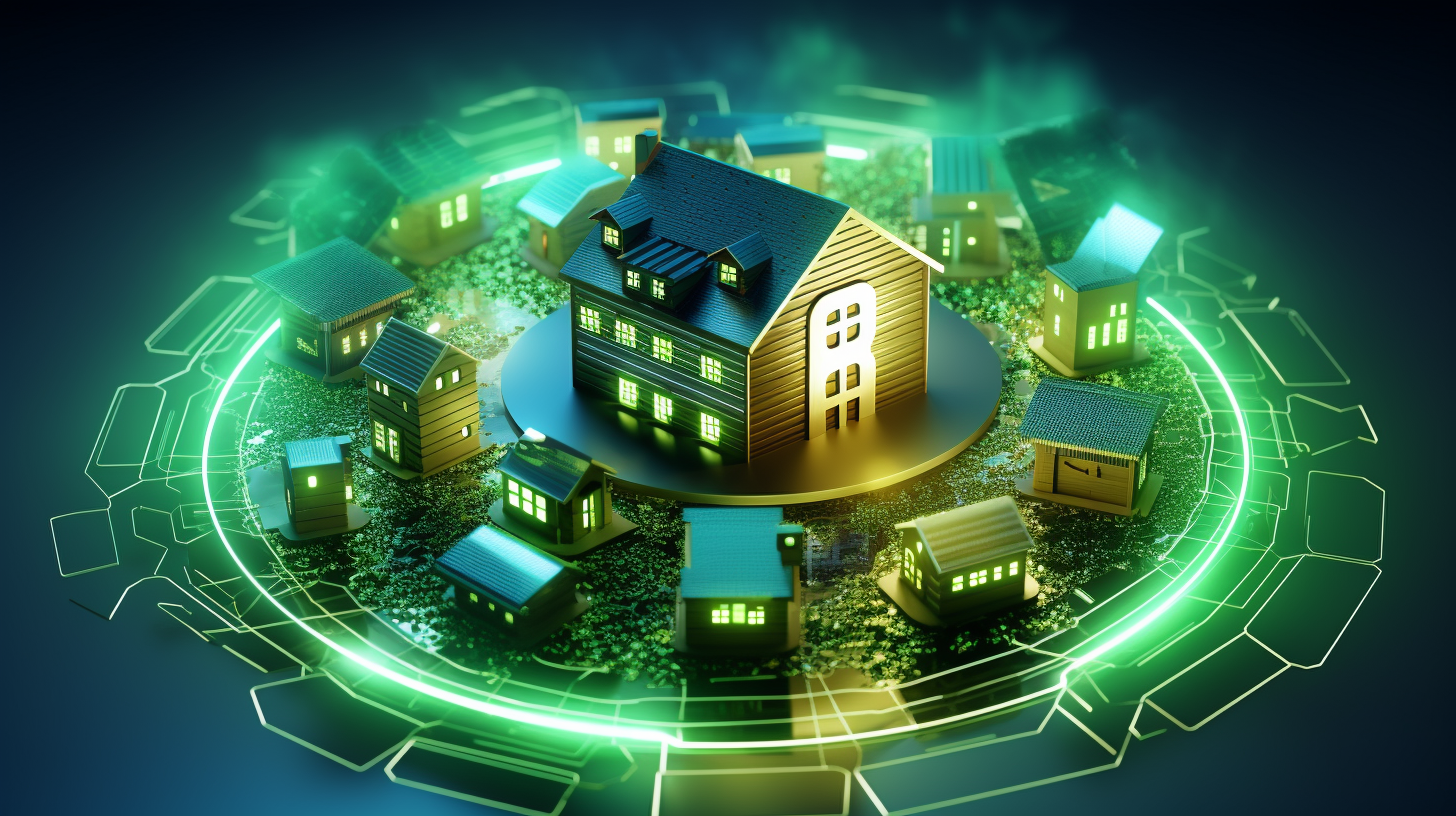In the bustling metropolis where shimmering blockchain nodes replace the twinkling of stars, a proud owner of a ‘Crypto-Enabled Smart Home’ waits in earnest as their house begins its daily operation—siphoning solar energy, trading excess power back into the grid, and settling accounts with the utility company, all in sleek, encrypted transactions powered by cryptocurrency. Welcome to the world where homes are not just living spaces, but proactive participants in the crypto utility economy. In this article, we examine whether smart homes can truly become self-reliant economic units capable of paying for their utilities in cryptocurrency.
What if your home could generate its own income, shoulder its utility expenses, and maybe even nest a little surplus for your digital wallet? As we’ve explored previously in the article ‘Rewiring Power Grids: Will Crypto Networks Energize the Future of Electricity?’, the potential of decentralized energy trading via blockchain could redefine the concept of ‘paying bills.’ With smart homes becoming increasingly prevalent, we delve into the indelible link between these high-tech habitats and the burgeoning crypto utility market.
Smart Homes: The Financial Hubs of Tomorrow?
The foundation of crypto-savvy smart homes lies in their intelligent energy management systems. Equipped with photovoltaic panels and wind turbines, homes are transitioning from passive energy consumers to active energy entrepreneurs. During peak production, excess energy is not wasted but sold back to the grid. This transaction, traditionally done in fiat, is now a golden opportunity for cryptocurrencies to swoop in, providing a seamless, transparent, and automated settlement system. The Internet of Energy (IoE) embarks on a quintessential role where energy production and consumption data are meticulously recorded on blockchains, establishing an immutable and trustable framework for peer-to-peer energy trading.
From Satoshi to Saver: Cryptocurrency as a Utility Currency
Imagine a scenario where your home’s surplus energy earns you Bitcoins or Ethers. Using smart contracts, agreements are auto-executed when certain conditions are met, like delivering certain kilowatt-hours to the grid. This automates utility payments without incessant monitoring, pushing the homeowner’s role from active participant to savvy passive investor. We are at a juncture where programmable money meets programmable homes—an enthralling thought for crypto aficionados.
However, with technological innovation comes the need for robust security protocols. Cybersecurity remains a significant concern, as a digitized grid is a tempting target for malware and hacking attempts. Despite these challenges, the sheer magnitude of a smarter, more autonomous energy system’s efficiency and profitability makes the crypto utility market an electrifying prospect.
Challenges Before the Payoff
But, before painting a too rosy picture, we must heed the roadblocks. The high initial investment in turning a regular home into a crypto-generating smart home is substantial. Another hurdle is regulatory landscapes—governments and industries are still grasping the shift towards decentralized financial systems. Skeptics exist, questioning the environmental impact of a crypto-reliant society, even as advancements in energy-efficient blockchain algorithms solidify.
An all-important factor in this puzzle is consumer adoption and trust. For smart homes to become the default rather than the exception, there needs to be a shift in consumer behavior and understanding of the marriage between energy consumption and digital currencies.
The concept of a house that not only provides shelter but also shoulders its economic responsibilities is an exhilarating vision. It’s a concept that edges closer to reality with each leap in blockchain and smart home technology.
Conclusion: A Future Charged with Possibilities
The concept of self-sustaining homes that manage their utility expenses in cryptocurrencies is not just fascinating—it’s feasible within the expanding symbiosis of smart technology and blockchain. As the infrastructure matures and we move towards more renewable, decentralized energy sources, the crypto utility market shows great promise in enabling homes to not just be places to live, but financial entities capable of ‘earning their keep’.
This is but a glimpse into an autonomous, crypto-empowered future. As smart homes adjust their solar panels to catch the first morning rays, the question of whether they will eventually pay for themselves in crypto utilities seems less like speculation and more like an impending reality. Whether they will become the norm, time—and technology—will tell.
